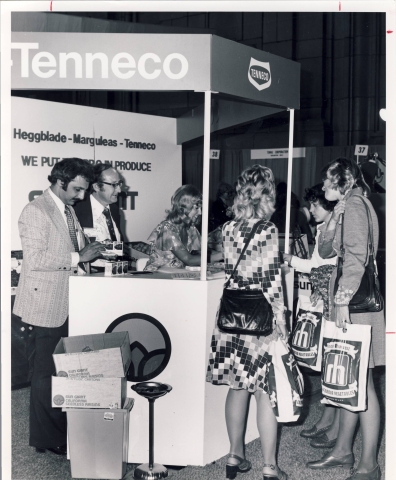Timing is Everything for Fresh Summit

In April 1951, a couple dozen exhibitors and about 200 attendees gathered in Columbus, Ohio, for the first table-top show of the Produce PrePackaging Association (now known as the Produce Marketing Association).
Because many women were joining the workforce in those post-war years, the demand for packaged fruits and vegetables was rising. Self-service supermarkets were spreading across the country and frozen foods were
gaining popularity.
“The suppliers of fresh produce realized they had to up their game to improve the quality of packaged produce – especially delicate items like mushrooms and strawberries – if they were to compete with the convenience offered in the frozen food aisles,” said Bryan Silbermannn, CEO of PMA.
The first decade of the association and its show were rocky, Silbermann said. The Korean War reduced the availability of plastics used for packaging. The quality of some produce offered in packaged form was not good, so it harmed consumer acceptance.
By the late 1950s, the show started bringing in suppliers of large packaging machinery as well as plastic films and corrugated board and paper.
The membership was changing as well as more supermarket companies were joining. So the focus began to shift away from packaging technicalities to marketing produce at the store level and in 1967 the name was changed to the Produce Packaging and Marketing Association.
Attendance in the early years was fairly small – in 1961, only 862 people came to the St. Louis show. Registrants were almost exclusively male, but about 20 percent of attendees were spouses (included in a separate “Ladies registration”). In 1974, the “Ladies” program in San Francisco drew 820 people – almost a third of overall attendance.
Back then, the show had a different theme name every year based on the host city. It wasn’t until the mid-1990s that Fresh Summit became the official show name.
Today’s show now occupies nearly 600,000 square feet with nearly a thousand companies showcasing products and services ranging from the latest in fresh-cut salads to the most high-tech solutions for growers, packagers and supermarkets, Silbermann said.
“Through the years, we’ve continued to attract a wide variety of companies marketing to others across the entire produce and floral (which was added in the late 1970s) supply chain,” Silbermann said.
He added, “So the show includes an amazingly vibrant series of booths filled with color, aroma, technology, and yes – passion. The people in our industry love to interact and show their stuff because they deal with perishable products – and that inspires them to move fast and do deals.”
But just because the products on the show floor are perishable doesn’t mean they go to waste. Over the past decade, Fresh Summit exhibitors have donated an estimated 3.2 million pounds of fresh produce to local food banks in their host cities, including 341,061 pounds to the Atlanta Community Food Bank at the 2015 show.
The show has become more global and now has various country pavilions for Mexico, Chile, the Netherlands, Peru, Guatemala, South Africa, Canada and more. Technology also plays a greater role, with more sophisticated audio-visual staging for general sessions, online booth assignments and registration, and kiosks on the showfloor.
At the show in Atlanta last October, Fresh Summit hosted nearly 20,000 attendees from over 60 countries and more than 1,000 exhibitors, including one that remains from that first show: Sunkist.
“Our growth has continued because we’ve always listened to our members and adjusted the convention and exposition to best meet their needs,”
“Just as the industry changed its focus over the decades from packaging to marketing, so too have we changed with the needs of our members. I believe that’s what makes Fresh Summit such a dynamic and vibrant event: the needs of exhibitors and attendees have always been placed first," Silbermann said.


Add new comment